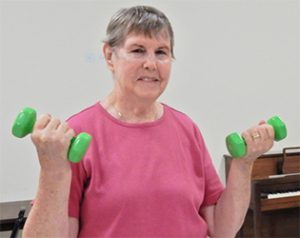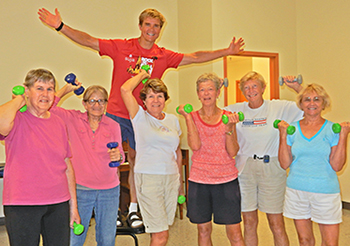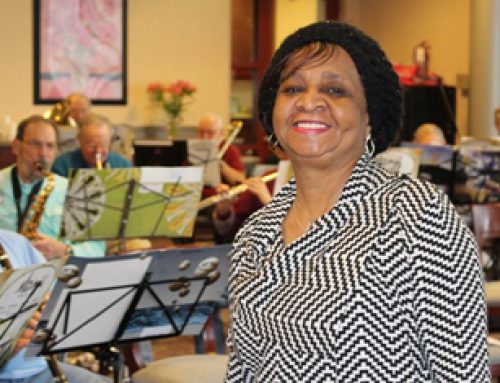 Back to school has always been a busy time for retired school teacher Leanna Clark. These days, Clark stays in school all year long. She takes exercises classes at San Diego Oasis four days a week to keep feeling steady on her feet and confident in her movements.
Back to school has always been a busy time for retired school teacher Leanna Clark. These days, Clark stays in school all year long. She takes exercises classes at San Diego Oasis four days a week to keep feeling steady on her feet and confident in her movements.
Clark’s job as a kindergarten and first grade teacher kept her moving but because of arthritis she began to use a cane. Eventually, she had surgery to replace both knees so that she didn’t miss a day teaching her Kindergarten and first grade students. While life remained busy, she didn’t feel steadier on her feet.
One day about 15 years ago Leanna fell.
“My doctor agreed I was lucky I didn’t get hurt worse than I did. At that point my son, Tod, suggested that I find a balance class to help keep me from falling again.”
These days Clark’s exercise routine means she no longer needs to use a cane for support. 
She feels fortunate that her neighbor told her about exercise classes at San Diego Oasis. Last Christmas when asked by a friend why she exercised so often she replied,
“For me, exercise has become as irresistible as a box of chocolate . . . I’m kind of addicted.”
We all lose one percent of our muscle mass after we turn 40, but anyone who follows Clark’s lead does not have to succumb to loss of strength, flexibility and agility.
“I always encourage people to stick with it, Clark says. If I could do it so can they. I’m the oldest student in my class and I enjoy the independence I have regained by exercising.”
Take these steps to stay on your feet
1. Sign up for an exercise class. Tai Chi, strength building and balance classes are especially good, but anything that builds your fitness will help.
Find out about upcoming Oasis fitness and balance classes.
2. Avoid flippin, slippin or trippin. Choose sandals with ankle straps and socks with grippers over flip-flops and slippers. Remove tripping hazards, like throw rugs, from your home. Have your pharmacist or doctor review your medications to make sure that medication interactions are not causing balance issues.
3. See where you stand. Get a physical or attend a community health screening to detect a problem that can affect your balance. Screenings to test balance, strength, agility, bone density, orthostatic blood pressure, vital signs, foot sensation, vision, and hearing can help healthcare professionals create an individualized plan of action to prevent a fall.






Leave A Comment
You must be logged in to post a comment.